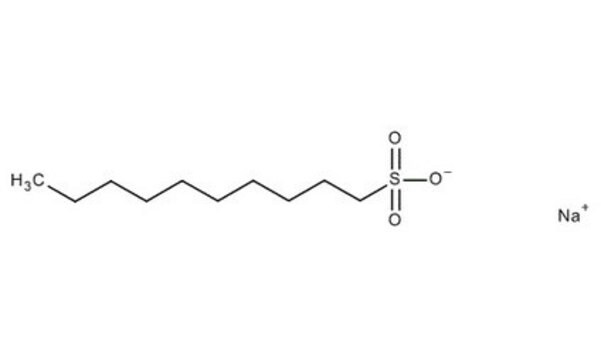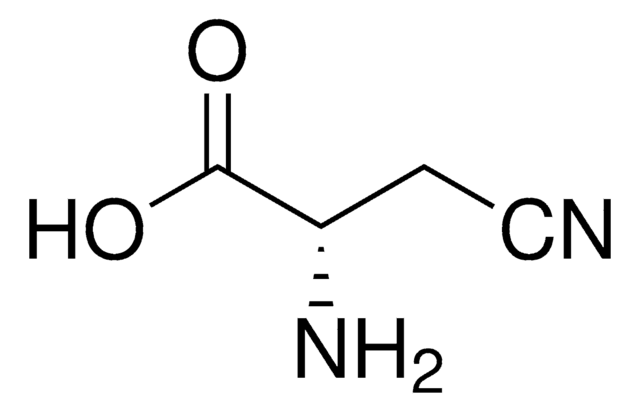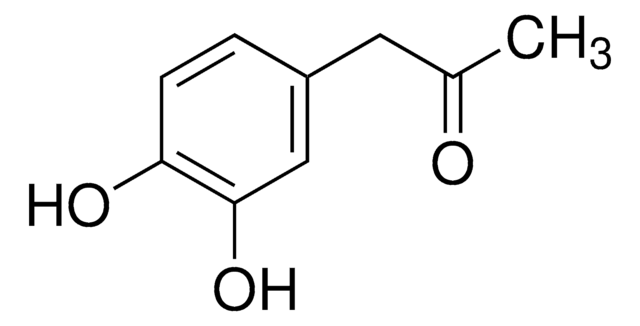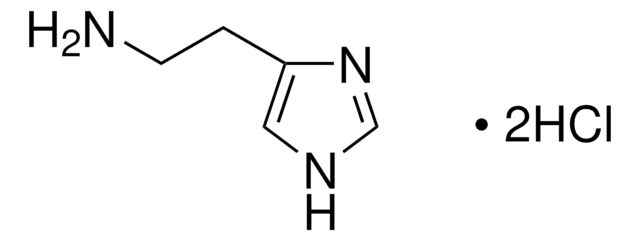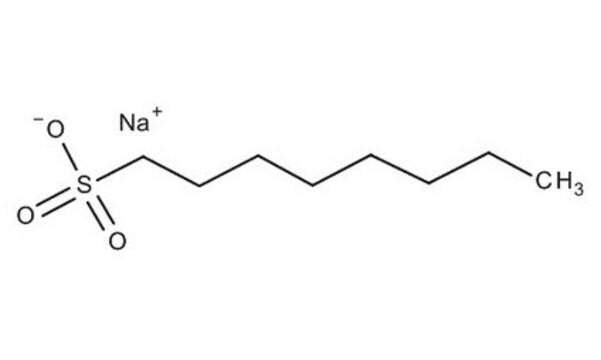Kluczowe dokumenty
D3412
Sodium 1-decanesulfonate
~98%
Synonim(y):
1-Decanesulfonic acid sodium salt
About This Item
Polecane produkty
opis
anionic
Poziom jakości
Próba
~98%
Formularz
powder
masa cząsteczkowa
244.33 g/mol
metody
LC/MS: suitable
mp
>300 °C (lit.)
ciąg SMILES
[Na+].CCCCCCCCCCS([O-])(=O)=O
InChI
1S/C10H22O3S.Na/c1-2-3-4-5-6-7-8-9-10-14(11,12)13;/h2-10H2,1H3,(H,11,12,13);/q;+1/p-1
Klucz InChI
AIMUHNZKNFEZSN-UHFFFAOYSA-M
Szukasz podobnych produktów? Odwiedź Przewodnik dotyczący porównywania produktów
Opis ogólny
Zastosowanie
Cechy i korzyści
- Suitable for high-performance liquid chromatography (HPLC) and ion-pair liquid chromatography
- Allows the separation and resolution of positively charged analytes.
Kod klasy składowania
11 - Combustible Solids
Klasa zagrożenia wodnego (WGK)
WGK 3
Temperatura zapłonu (°F)
Not applicable
Temperatura zapłonu (°C)
Not applicable
Środki ochrony indywidualnej
dust mask type N95 (US), Eyeshields, Gloves
Wybierz jedną z najnowszych wersji:
Masz już ten produkt?
Dokumenty związane z niedawno zakupionymi produktami zostały zamieszczone w Bibliotece dokumentów.
Klienci oglądali również te produkty
Nasz zespół naukowców ma doświadczenie we wszystkich obszarach badań, w tym w naukach przyrodniczych, materiałoznawstwie, syntezie chemicznej, chromatografii, analityce i wielu innych dziedzinach.
Skontaktuj się z zespołem ds. pomocy technicznej
